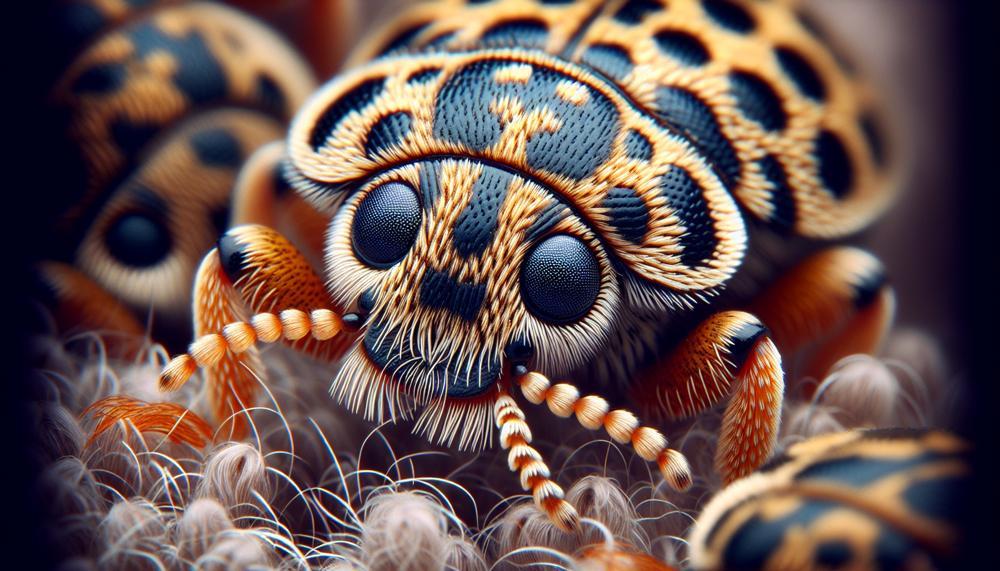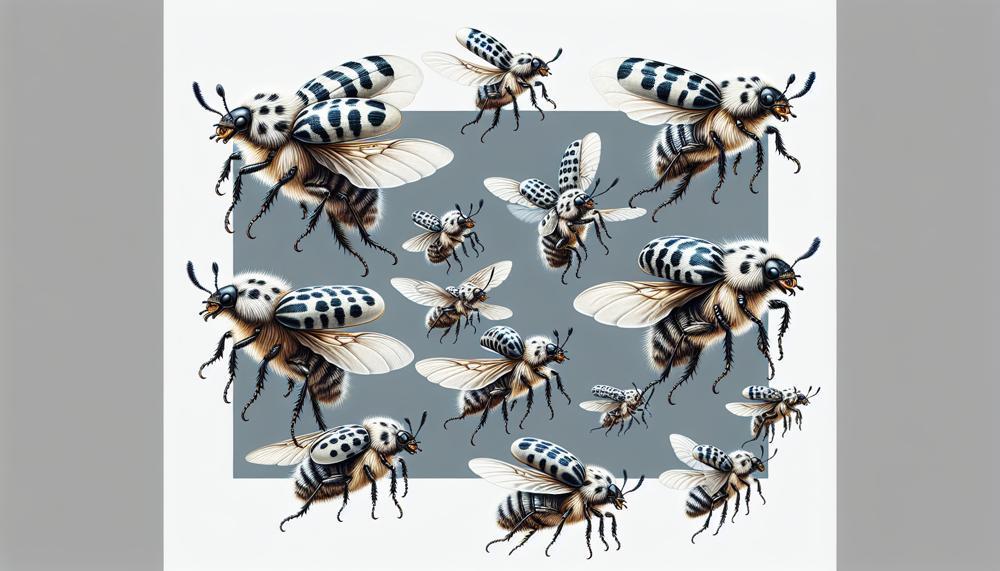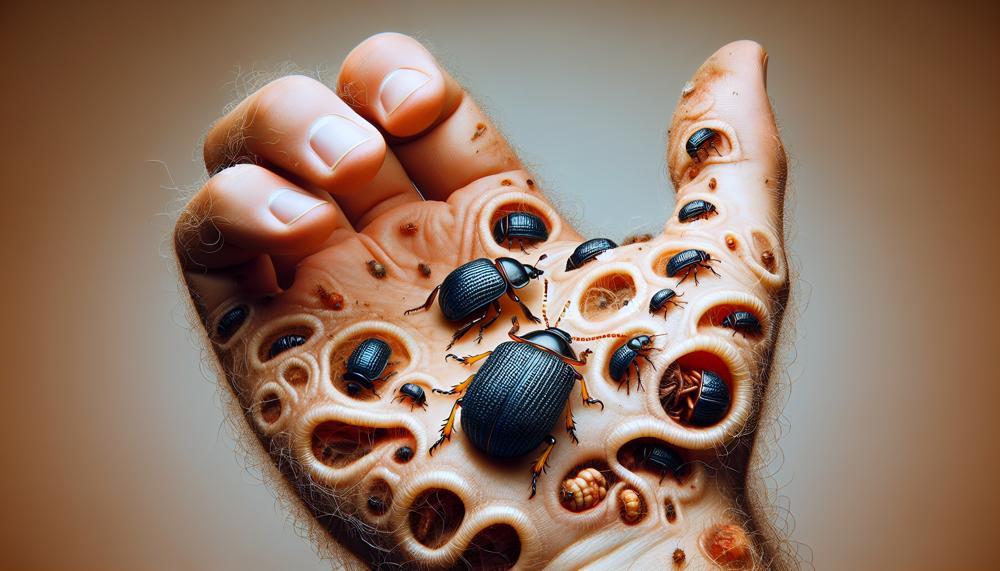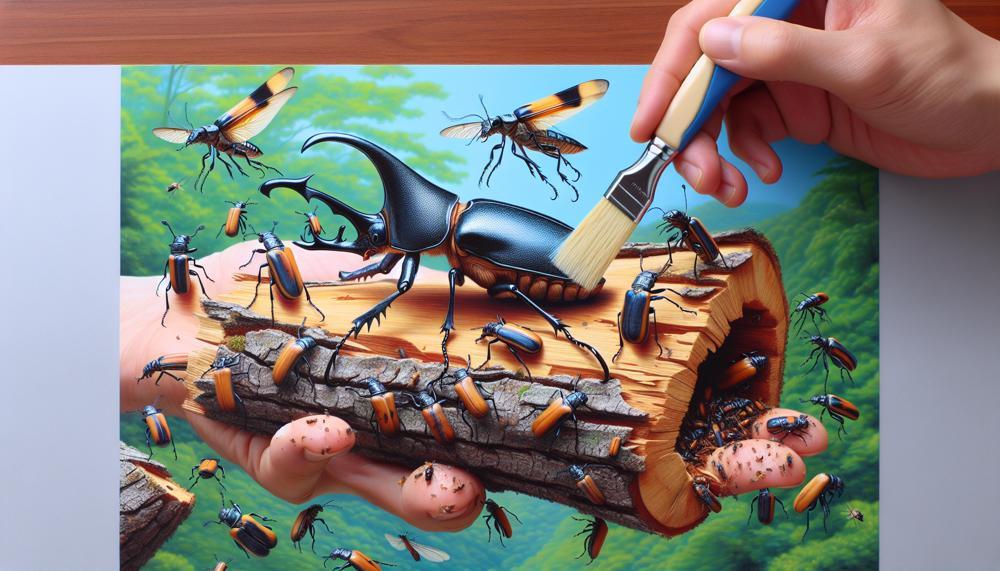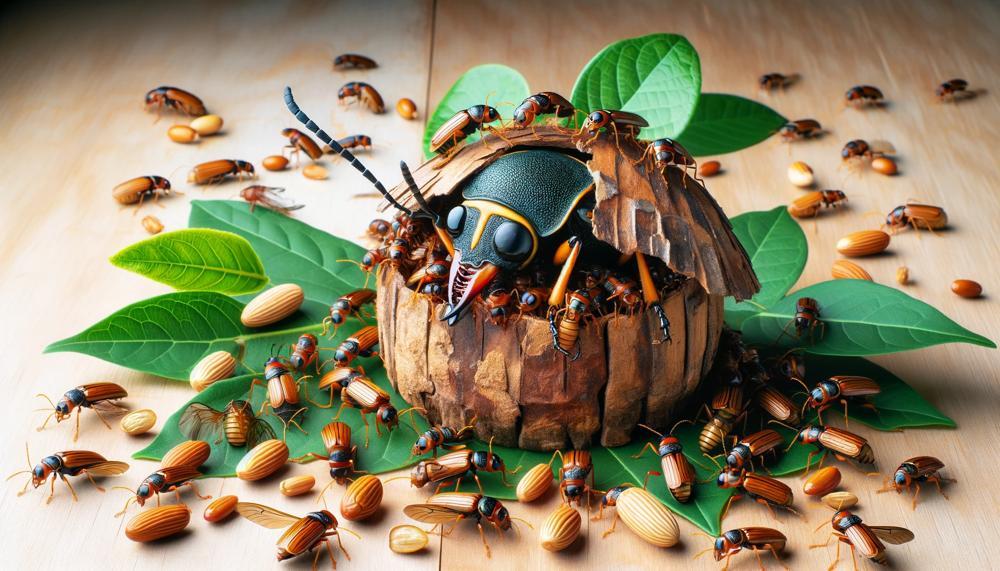In the realm of household pests, carpet beetles often go unnoticed until they leave behind a trail of damage. But what many people don’t realize is that these tiny critters possess a secret weapon: the ability to fly.
Let’s delve into the fascinating world of carpet beetles and uncover the mysteries surrounding their aerial capabilities.
- Carpet beetles belong to the family Dermestidae, a diverse group of insects known for their varied feeding habits.
- These tiny creatures, typically measuring between 1/16 to 1/8 of an inch in length, are often mistaken for other common household pests like ladybugs or pantry beetles.
- Carpet beetles primarily feed on natural fibers, making them a threat to carpets, clothing, furniture, and other fabric-based items.
- While carpet beetle larvae are wingless and crawl along surfaces, adult carpet beetles possess fully functional wings, allowing them to take flight and disperse to new locations.
- The ability to fly makes carpet beetles highly mobile, enabling them to infest multiple areas within a home or even spread to neighboring properties.
Table of Contents
- 1 Understanding the Life Cycle of Carpet Beetles
- 2 Identifying Carpet Beetles and Their Larvae
- 3 Common Signs of Carpet Beetle Infestation
- 4 Factors that Attract Carpet Beetles to Homes
- 5 Effective Methods to Prevent Carpet Beetle Infestations
- 6 Safe and Natural Solutions for Eliminating Carpet Beetles
- 7 Conclusion
Understanding the Life Cycle of Carpet Beetles
| Carpet Beetle Egg Hatching Time | Hatching Period |
| Optimal Conditions (77°F, 70% Humidity) | 7 to 10 Days |
| Cooler Conditions (68°F, 50% Humidity) | 14 to 21 Days |
Environmental factors, primarily temperature and humidity, have an impact on the hatching time of carpet beetle eggs. Under optimal conditions of 77°F (25°C) and 70% humidity, the eggs hatch within 7 to 10 days.
However, in cooler conditions, such as 68°F (20°C) and 50% humidity, the hatching period can extend to 14 to 21 days.
Identifying Carpet Beetles and Their Larvae
| Characteristic | Description |
|---|---|
| Body Shape | Elongated, oval-shaped body |
| Size | 1/8 to 1/4 inch in length |
| Color | Varies from light brown to black, with irregular patches of white, brown, or yellow |
| Hairs | Covered in dense, short, golden-brown hairs |
| Head | Small, dark brown or black head, with two prominent antennae |
| Legs | Six legs, with a pair of claws on each foot |
| Movement | Crawl quickly and smoothly, often in a zigzag pattern |
Common Signs of Carpet Beetle Infestation
| Sign | Description |
|---|---|
| Adult carpet beetles | Small, oval-shaped beetles with a variety of colors and patterns. |
| Carpet beetle larvae | Small, brown or black larvae with long, bristly hairs. |
| Cast skins | The shed skins of carpet beetle larvae. |
| Damaged fabrics | Holes or frays in carpets, rugs, clothing, and other fabrics. |
| Eggs | Small, white eggs that are often laid in clusters. |
Carpet beetles are common pests that can cause damage to carpets, rugs, clothing, and other fabrics. Here are some common signs that indicate the presence of a carpet beetle infestation:
- Adult carpet beetles:** Adult carpet beetles are small, oval-shaped beetles that are typically brown or black. They have a variety of patterns on their wings, and they are often found near windows or doors.
- Carpet beetle larvae: Carpet beetle larvae are small, brown, or black worms that have long, bristly hairs. They are often found in carpets, rugs, and other fabrics.
- Cast skins: Carpet beetle larvae shed their skins as they grow. These cast skins can be found in carpets, rugs, and other fabrics.
- Damaged fabrics: Carpet beetles can cause damage to carpets, rugs, clothing, and other fabrics. They eat the fibers of the fabric, which can cause holes or frays.
- Eggs: Carpet beetles lay eggs in clusters. These eggs are small and white, and they are often found in carpets, rugs, and other fabrics.
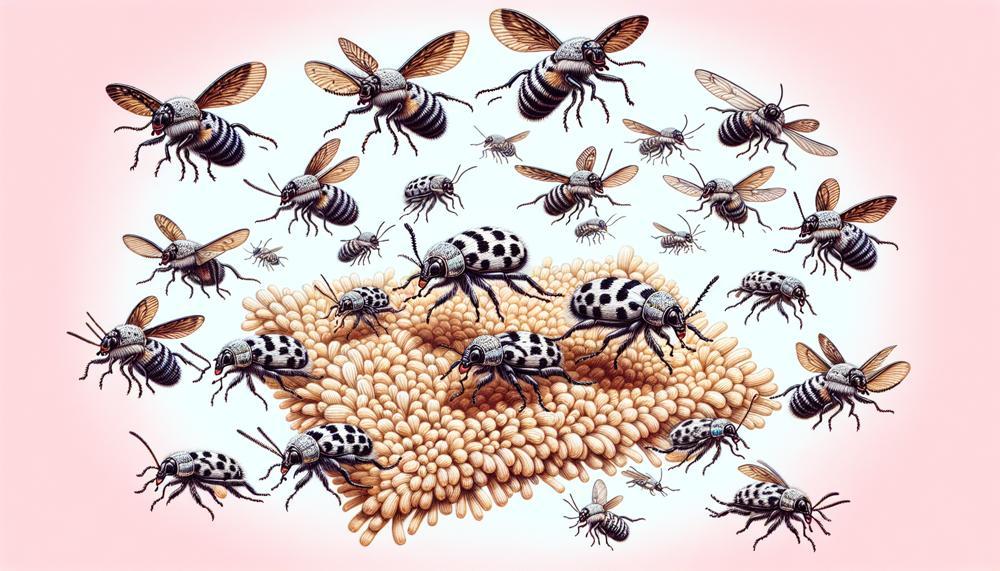
If you see any of these signs, it is important to take action to get rid of the carpet beetles. Carpet beetles can be difficult to control, but there are a number of things you can do to get rid of them, including:
- Vacuuming regularly
- Cleaning carpets and rugs
- Washing clothes and other fabrics
- Sealing cracks and crevices
- Using insecticides
Factors that Attract Carpet Beetles to Homes
| Factor | Explanation |
|---|---|
| Warmth | Carpet beetles thrive in warm environments, with optimal temperatures ranging from 70 to 80 degrees Fahrenheit. Homes provide a consistent source of heat, making them an ideal habitat for these pests. |
| Humidity | Carpet beetles prefer humid conditions, as they help keep their eggs and larvae hydrated. Homes with high humidity levels, such as bathrooms and basements, are more likely to attract these pests. |
| Darkness | Carpet beetles are nocturnal insects that prefer dark, secluded spaces to hide during the day. Closets, under beds, and behind furniture are common hiding spots for these pests. |
| Natural fibres | Carpet beetles are primarily attracted to natural fibers, such as wool, silk, and leather. These fibers provide a food source for the larvae, as well as a suitable environment for them to develop and pupate. |
| Disturbance | Vibrations and movement are easily disruptive to carpet beetles. Homes with frequent activity and foot traffic are more likely to experience infestations, as the beetles are forced to relocate to find new hiding spots. |
Effective Methods to Prevent Carpet Beetle Infestations
| Simple Steps | Preventative Measures |
|---|---|
| Vacuum carpets | Remove beetle eggs, larvae, and adults |
| Clean closets | Remove dust, food crumbs, and pet hair |
| Wash clothes | Kill any beetles or eggs on clothing |
| Dry clean wool | Wool is a common target for carpet beetles |
| Inspect furniture | Check for signs of infestation before bringing it inside |
| Use traps | Place pheromone traps to catch adult beetles |
| Store items | Use airtight containers for long-term storage |
| Reduce humidity | Lower humidity levels to deter carpet beetles |
| Seal cracks | Prevent beetles from entering your home |
| Professional help | Contact a pest control company for severe infestations |
Safe and Natural Solutions for Eliminating Carpet Beetles
| Natural Ingredient | Method of Use |
|---|---|
| Diatomaceous Earth | Sprinkle diatomaceous earth over the carpet, paying special attention to areas where carpet beetles are likely to congregate, such as under furniture and in closets. Leave the diatomaceous earth in place for at least 24 hours, then vacuum it up. |
| Boric Acid | Mix boric acid with an equal amount of flour. Sprinkle the mixture over the carpet, paying special attention to areas where carpet beetles are likely to congregate. Leave the mixture in place for at least 24 hours, then vacuum it up. |
| Essential Oils | Add a few drops of essential oil, such as peppermint, rosemary, or lemongrass, to a spray bottle filled with water. Shake the bottle well to mix the ingredients, then spray the solution over the carpet. |
| Cedar Chips | Place cedar chips in a sachet or cheesecloth bag, and place the bag in areas where carpet beetles are likely to congregate. The cedar chips will repel the carpet beetles and help keep them away. |
| Garlic | Crush a few cloves of garlic and sprinkle the pieces over the carpet. The garlic will repel the carpet beetles and help to keep them away. |
Conclusion
A tiny menace lurks, its presence often unnoticed until it leaves behind a trail of destruction. Carpet beetles, with their secret weapon of flight, can quickly infest multiple areas, wreaking havoc on our precious fabrics.
Their life cycle, from egg to larva to adult, is a testament to their adaptability and resilience. Identifying these pests and their signs of infestation is crucial for taking swift action.
To prevent their invasion, we must create an environment that is unfavorable to their needs, reducing warmth, humidity, and darkness. Natural solutions, such as diatomaceous earth, boric acid, essential oils, cedar chips, and garlic, offer safe and effective ways to eliminate these unwanted guests.
By understanding their behavior and implementing proactive measures, we can reclaim our homes from the clutches of these destructive insects.

